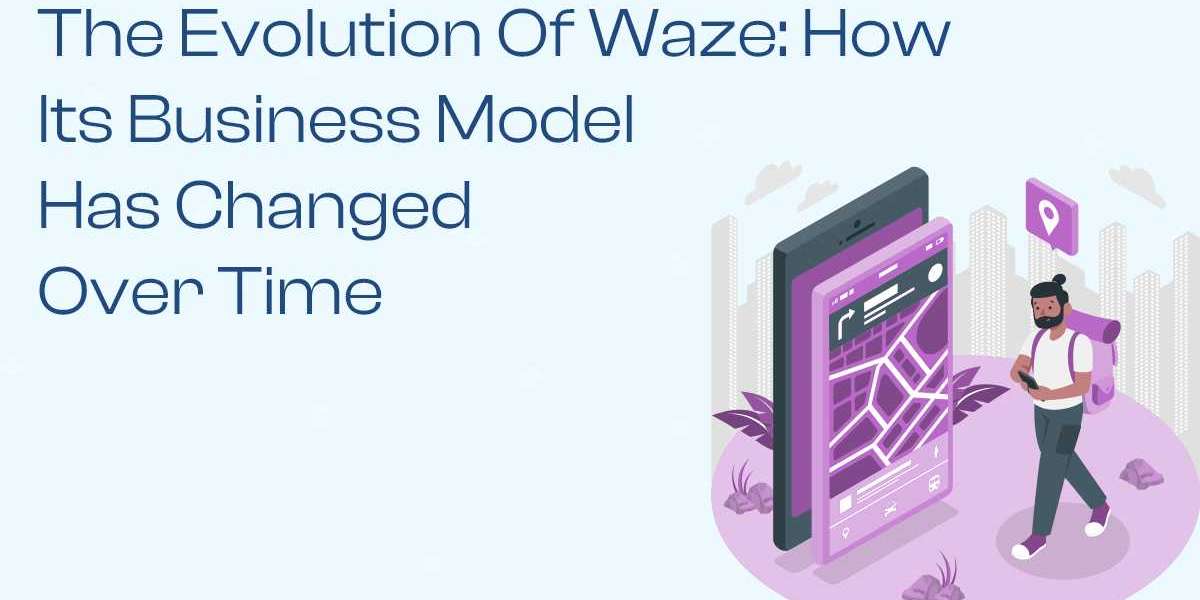Waze, the popular navigation app founded in 2008, has become an essential tool for millions of drivers worldwide. Originally known for its crowd-sourced traffic data and real-time route suggestions, Waze has significantly evolved in its functionality, user base, and business model. From its early focus on providing free navigation to its current strategies under Google’s ownership, Waze's journey offers insights into how tech companies can adapt and thrive in a competitive market. Here’s a look at how Waze’s business model has evolved and expanded over time.
Early Days: Crowdsourced Data and User Engagement
When Waze first launched, it positioned itself as a user-driven platform that offered something unique: real-time, crowdsourced traffic information. Unlike other navigation apps that relied solely on static maps and data from government agencies, Waze empowered its users to contribute live updates about traffic conditions, accidents, road hazards, and even police presence. This interactive element was pivotal in establishing Waze’s value to drivers, setting it apart from larger competitors like Google Maps and Garmin.
Waze’s initial business model focused on building a large, engaged user base rather than monetization. The app was offered entirely free of charge, with no in-app purchases or ads. The goal was to prioritize user experience and encourage as much crowd-sourced data input as possible. This approach worked remarkably well, as Waze quickly gained a loyal following of daily users.
Monetization Begins: In-App Advertising
As Waze’s popularity grew, the company began exploring ways to generate revenue. In 2012, Waze introduced its first foray into monetization through in-app advertising. The platform launched Waze Ads, allowing local businesses to advertise their locations directly on the app’s map interface. Businesses could place small, branded pins on the Waze map, helping drivers discover their stores or services while in transit. This approach was unobtrusive yet effective, as it displayed ads only when relevant to drivers’ routes.
Waze Ads marked a significant shift in Waze’s business model, laying the foundation for future ad-based revenue. The ads were also beneficial for local businesses, as they could reach potential customers in real-time based on their current locations and driving directions. In-app ads became a valuable income stream for Waze while maintaining the app’s user-driven spirit.
Acquisition by Google and Expansion of Ad Offerings
In 2013, Google acquired Waze revenue model for an estimated $1.1 billion. This acquisition opened new possibilities for Waze’s growth and enhanced its business model. Under Google’s ownership, Waze continued operating independently but gained access to Google’s vast resources and technical infrastructure. With Google’s support, Waze expanded its advertising offerings, introducing more advanced targeting and customization options for businesses.
Waze Ads evolved to offer more flexible options for different types of businesses, such as small local stores, regional chains, and national brands. The platform introduced “Zero-Speed Takeover” ads, which appear only when a driver comes to a complete stop, minimizing distraction. Waze also allowed businesses to customize ad placements based on driving distances, commute patterns, and user demographics. These enhancements helped Waze become a valuable marketing tool for advertisers looking to connect with drivers in real-time.
Waze Carpool: A New Revenue Stream
In 2016, Waze launched Waze Carpool, an initiative to reduce traffic congestion by allowing users to share rides with nearby commuters. Unlike traditional ridesharing apps like Uber or Lyft, Waze Carpool focused on cost-sharing rather than profit. Drivers and riders shared travel costs, making it an affordable alternative for users.
While not a major revenue generator, Waze Carpool helped the company tap into the growing carpooling trend and promote its commitment to sustainable driving. It also gave Waze access to a new user demographic: commuters looking for economical and eco-friendly travel solutions. This service allowed Waze to further diversify its business model and extend its reach within the transportation industry.
Current Model: Community, Partnerships, and Data Licensing
Today, Waze business model continues to focus on community engagement, partnerships, and data monetization. Through partnerships with cities, transportation agencies, and major events, Waze offers live data to help improve traffic management. Waze also collaborates with governments and nonprofits to use its data for urban planning and emergency response, positioning itself as a valuable data resource in addition to a navigation app.
For revenue, Waze primarily relies on Waze Ads, offering businesses targeted advertising options. Additionally, through its partnership with Google, Waze has explored data-sharing initiatives, allowing businesses and city planners to access its traffic insights. Waze remains one of the most popular navigation apps, with a sustainable business model centered on ads, partnerships, and community-driven data.
Conclusion
Waze’s journey from a simple crowdsourced navigation tool to a versatile, data-driven business under Google’s wing highlights its adaptability and innovative spirit. By evolving its business model to include targeted advertising, data partnerships, and carpool services, Waze has successfully balanced user experience with revenue generation. As Waze continues to grow and adapt, its evolution serves as a valuable case study for tech companies looking to transform their offerings in response to market trends and user needs.


